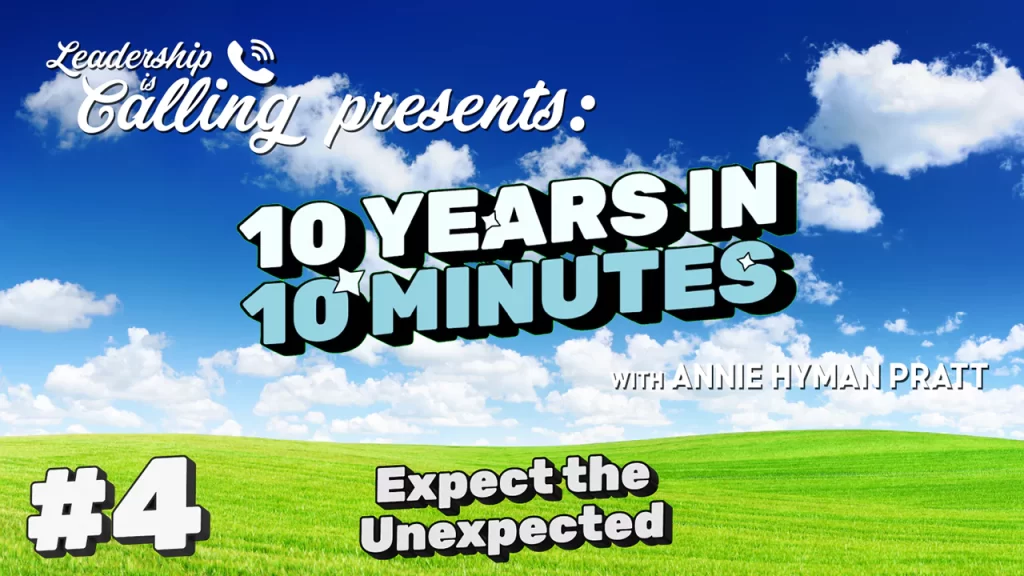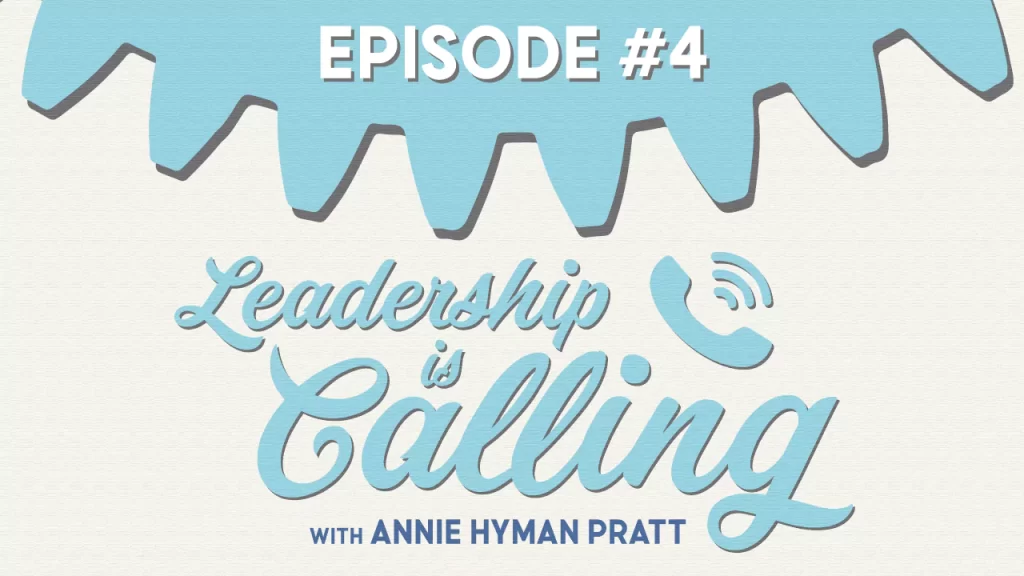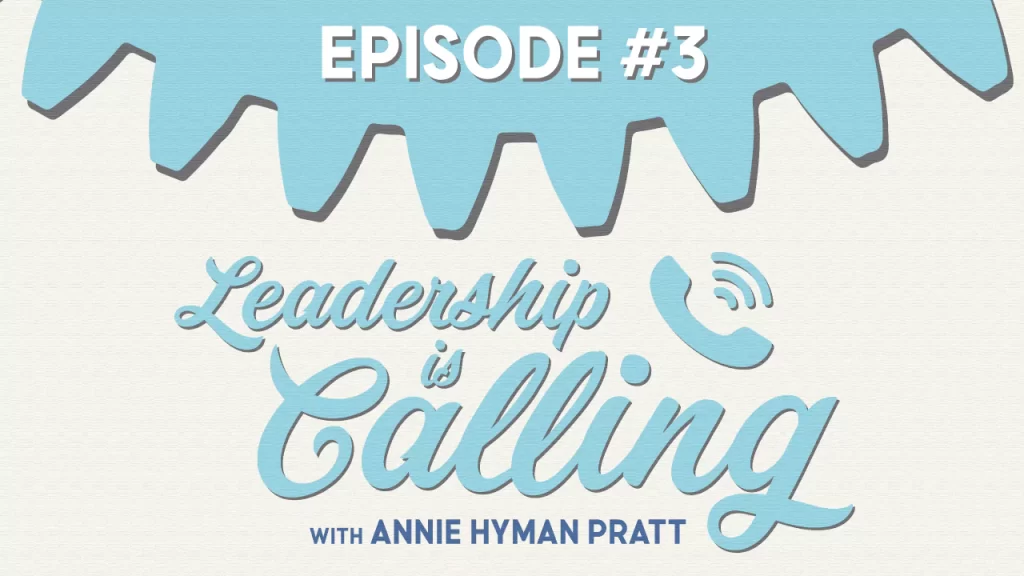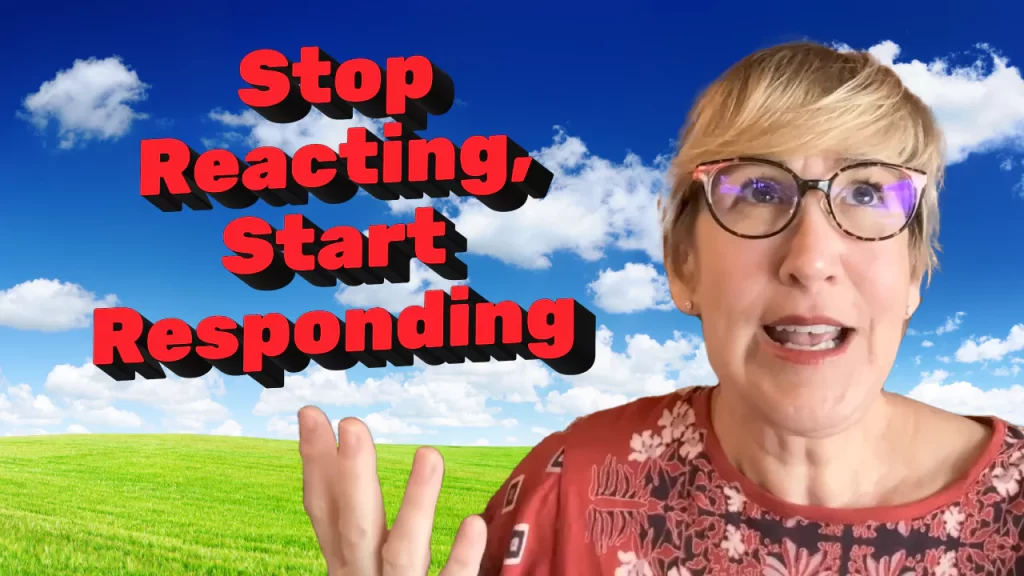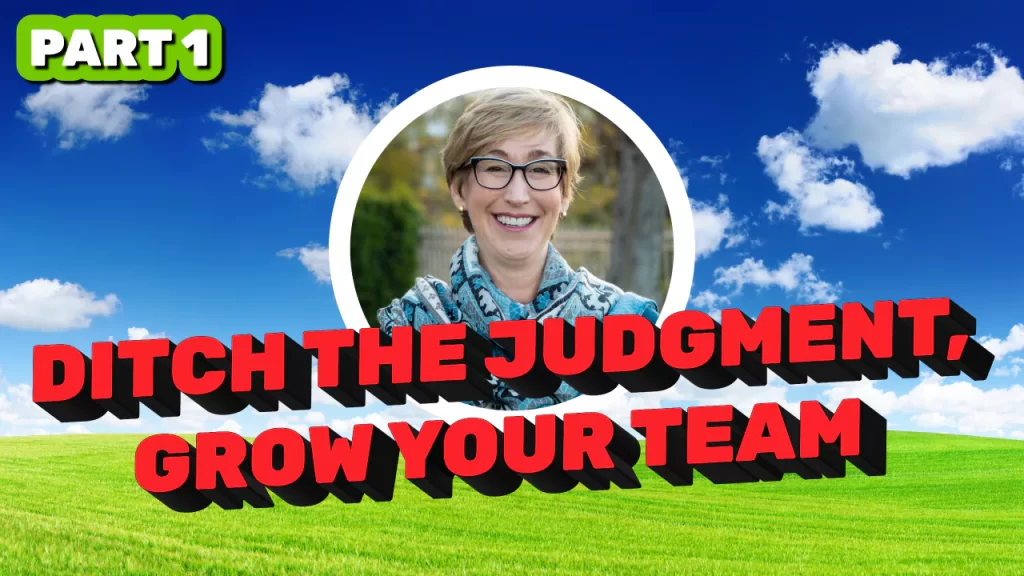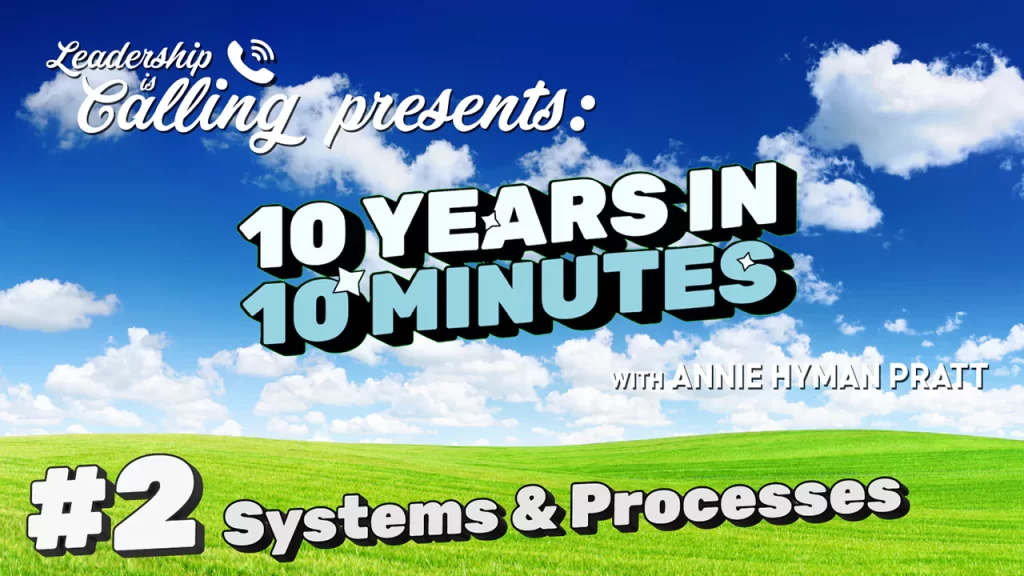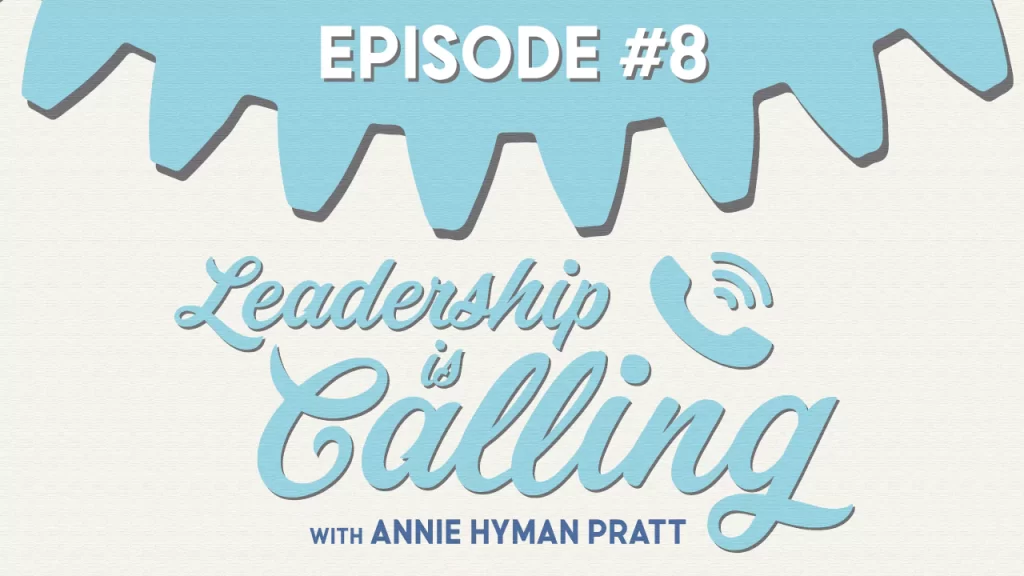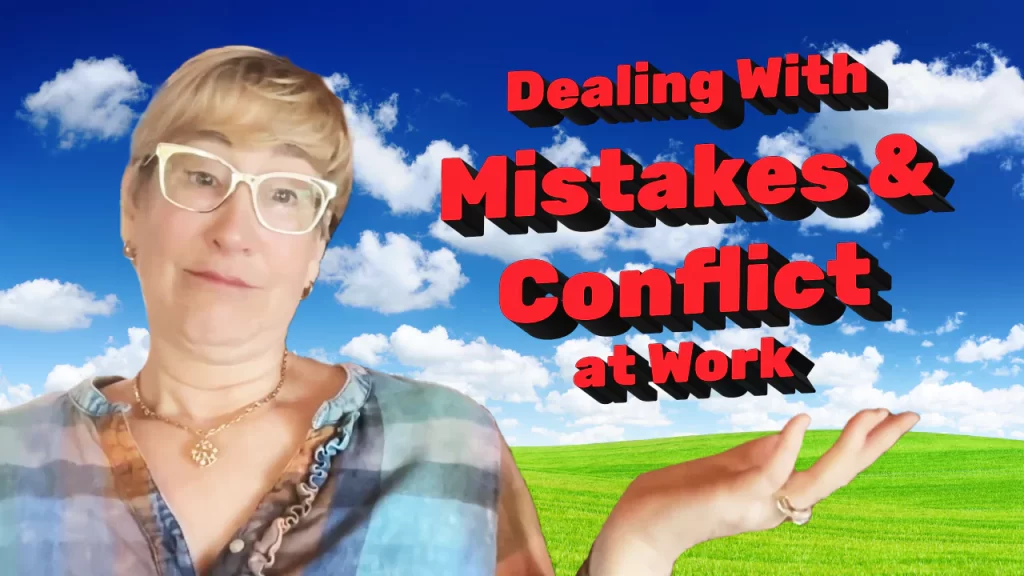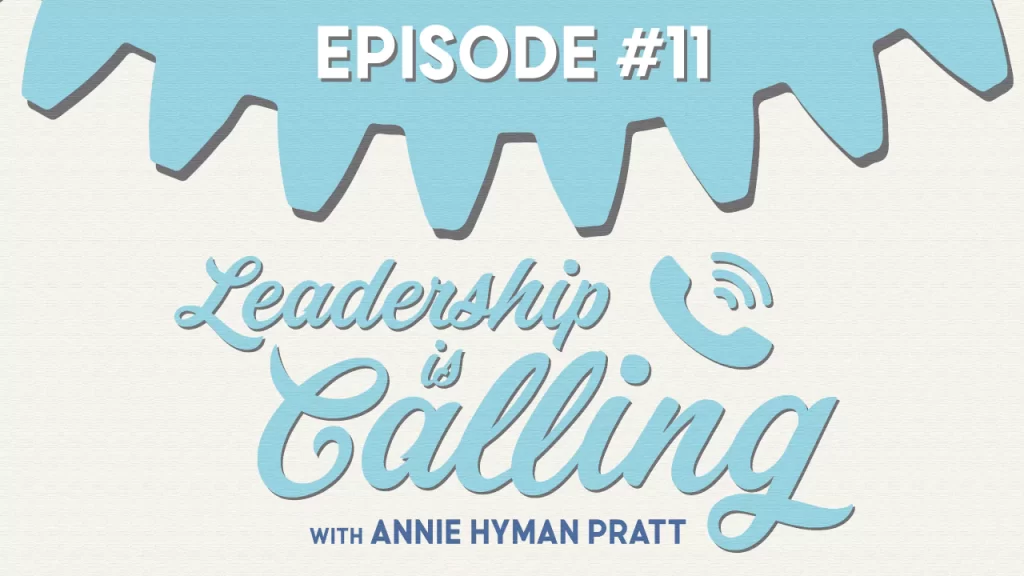Episode #46: Calm, Cool, & Productive Business Leadership: Managing Tension and Making Good Decisions
Leadership is Calling Episode #46
Annie Hyman Pratt and Heather McGonigal
- Description
- Transcript
Calm, Cool, & Productive Business Leadership: Managing Tension and Making Good Decisions
How can you tell when tension is pushing you into an unproductive state of mind? What’s your strategy for hitting the pause button before interactions go off track?
Leaders need to stay calm and thoughtful even during challenges. Learn to recognize unproductive mindsets and interactions. Refocus on business needs, not judging others. Take responsibility for getting yourself to a productive state of mind.
Business leadership experts Annie and Heather dive deep into the psychology of productive interactions.
Discover how your natural tendencies impact your communication style and learn how to adapt them for optimal results. Gain valuable insights into managing tension, making smart decisions under pressure, and building stronger relationships within your team.
Whether you’re a CEO, manager, or individual contributor, this video equips you with actionable strategies to unlock your leadership potential and achieve success, even in the face of adversity.
Key Points
- Recognize when you are in an overly reactive state vs. a productive state
- Take responsibility for getting yourself into a calm, thoughtful mindset
- Don’t take situations personally; focus on business needs and results
- Hit the pause button if interactions become unproductive
Related Resources
Leadership Skills: Take The Leadership Assessment Quiz
Leadership Development Articles: Leading Through Crazy Business Cycles | A Better Way to Lead
Downloadable Leadership Tool: The CCORE Empowerment Process

Auto-Generated Transcript – unedited version
Calm, Cool, & Productive Business Leadership: Managing Tension and Making Good Decisions
Hi, Annie.
Hi there. I’m so glad we get to have this conversation today. Because the world is changing faster and faster and we’re also in kind of an economic time and a, you know, a time in business where things are harder, like it’s we have a lot of businesses that are not doing as well as they did last year or the year before, the year before that. Right. Like, it’s a hard time.
Okay. So during those hard times, the thing is we’re human beings. And so one of the things we talk about a lot is that we need to learn how to keep ourselves in self leadership. We need to learn how to show up well, even under stress, pressure, challenge, change, you know that that even as things are getting harder and harder, we actually can’t do a good job in the business if we aren’t showing up well, if we’re showing up in a place that’s highly reactive, we’re we’re not going to have good discussions, good decisions. In fact, we’re going to have terrible interactions with other people if we’re not in a good place.
Okay. So I want to talk about that for just a second. The part of like, well, what does it mean to not be in a good place?
Okay. I know. So yeah. So maybe you are in a situation. I’ll just. I’ll give you a common one. This happens a lot in the businesses we work with where we have, you know, CEO founders who love well, not just love, they feel the need to make last minute changes, last minute changes in a product or a or a program or, you know, a presentation. Last minute changes. Okay. And they are extremely difficult and costly for the team to implement.
Okay. And it’s gosh, it’s a universal tension, let me just say that. But during times of challenge and change, it can feel like it’s over the top because it’s already hard to get a good result. So then when somebody comes to make a last minute change that they truly believe is worth it is going to make a big difference. But that place is so much pressure and challenge on the team that they’re there. Their confidence takes them into a place of thinking they can’t do it, you know, Then we wind up often with an environment. And if people don’t know how to show up and interact well, we end up with an environment that gets bad answers. Yeah, exactly.
Exactly. And so I want to go back for a moment and just talk about what you know, what it looks like when you’re in a level of tension. That’s okay. It’s not terribly reactive. You can still think. And when you’re in a place of tension where you’re no longer able to control your behavior and think, well, okay, and for everybody, it can be different. We’re all human. We’re all wired differently, but we’ve come up with a way to talk about it that I think is super handy. And this is how we interact, both kind of on the positive side, like our superpower and also our natural defense style.
So this axis is all about how we act in situations of stress and challenge. So are we a person who wants to decide an act or are we a person who wants to think and strategize? Okay. And I think you can, you know, think about which are you? It’s like, what do you have the urge to do when things are really, you know, tense and heated for me? I want to think about it more like, you know, a deadline is terrifying. If I’m under stress and pressure, I want to think about it. My husband wants to decide like yesterday. I mean, he would like to decide right after you say the sentence. Right. And then and then this is about how we interact with people, with people when we’re under stress and challenge.
Do we want to confront and engage? Meaning, do we want to talk about it and resolve it right this second? You know, like we’re going to talk about it? Or are we on the other side where we want to avoid the interaction completely? Or if we’re in the interaction, all we want to do is for the temperature to come down. So we’re going to say anything just to, you know, to get things to calm down a little bit, whether we’re intending to, you know, do that or not. Okay.
Exactly. This is our urge.
Okay. And the thing about this is that we are still human. And so we need to kind of know where you know, where are we when we’re being in our natural defense styles? Where are we? That is really out of the productive center because we need to be able to show up well enough to lean in well enough for me, being in this quadrant here, okay, that I can lean in, I can show up to a meeting. I can actually engage in a discussion talking about what decision we might make instead of literally canceling the meeting and not showing up at all because I don’t even want to deal with it. Right. So I can lean in enough and my husband is over here. You know, my husband or a CEO, they can lean in enough that they can slow down to say, hey, I want to hear what you’re thinking. And you know that they don’t need to confront in a way that’s like and you got to make a decision, right? The second they’re like, you know, tell me, give me some of your opinions. What are you thinking now that all of us can lean in enough?
Okay, So this is the area that we need to get to. And the way you know you’re in here is when you can see, you can see your counterpart’s, your team mates, you know, you can see them for who they are and you’re not triggered by it. So maybe my husband is a little bit pushy, you know, a little bit like, hey, when, when do you think and you might be able to decide, Well, something like that, you know, that I can show up in a place where I don’t take that personally. I just know that we’re under stress and tension. But as long as we can stay in here understanding each other without, you know, flying out here of like, my gosh, you know, for my husband, it might be like, there goes Annie again. She won’t ever make a decision. I better just, like, tell her right now, Annie, you have to do it right now or this thing is going to be terrible forever, right? So that means he would be going this way. And if he’s way out here, there’s nothing I can do to engage with him to make this productive. I need to know that.
And one of the things that you said about this, this space that I really liked, Heather, was it’s not a perfect circle. Sorry. I know it’s kind of like an egg. Is that this is kind of like where you can interact. And if it starts to go outside of this, it becomes the pause button. If you’re out here, you got to pause until you are both back inside of here because nothing productive is going to happen out here. So if my husband’s out here and I engage with that, I engage with that. It’s going to put me this way or I might flip entirely, you know, try to give him some of his own medicine. I don’t know. But I promise you. Yes, exactly. Exactly, exactly, exactly, exactly. And the worst thing is, if I flip over here and make a decision, which I’ve done, I will come back, like in three days and try to reverse it. It won’t hold anyways all the time.
The CEO’s automatic actually is. Often CEOs are in this category, by the way. I think it’s the most common category for CEOs, for founders, entrepreneurs. So, you know, their most common way of showing up is to just get more demanding or just like, why decided we’re just going to do it. And so when you know, when you are confronting a CEO who has who is here, who’s who’s literally like in a place of like, I’ve decided that’s it, that’s not a good place to negotiate from. This is you know, so in that spot, what we want is all of us know how to push the pause button to say, in that case, it could be something like, okay, we hear you. Let’s you know, we’re going to go back and do a little bit of homework, come back with what it’s going to take.
And the CEO at that point may even say, well, I don’t care what it takes, you’re just going to do it. Okay, that’s okay. Because for you to do your jobs, you’re still going to need to see what it takes. You’re still going to need to do that kind of homework and you’ll have an opportunity to come back with that.
Yeah, that’s correct. Yes. Yes, absolutely. And the thing is, is that the homework and where you are going to come from for the conversation is not from a place of you know, what the way you made that demand and just made a unilateral decision and didn’t even include us like that doesn’t work for us. Okay. That’s not a good place to engage from. This is not going to work because then you’re in a power struggle. And who’s going to win the power struggle now you like it’s it it goes terrible. So when you go back to do your homework, you are going to approach it from the business lens. From the business lens you have a chance to think about maybe even, you know, ask, well, you know what? What is that we’re thinking the purpose for this changes this part and that, you know, are you thinking you can get, you know, an extra half a million dollars in sales for making this last minute change or you think it’s only 1,000 sales or whatever it is? It’s like we are going to look at it through the business lens because that’s our responsibility, that’s our job. And we’re going to do our best to not let our human emotional parts get in the way. But we know, but we still have to work with other humans.
The thing that I want everybody to know is that just because somebody on your team, this is going to be all of us at one time or another just because somebody else is outside of this, you know, this green productive interaction spot, That does not mean that we get a pass and we get to be in that spot and not take responsibility for coming into this spot. This being in this green part is our responsibility, no matter how anybody else shows up. That’s the part that we need to get good at, that we need to get the leadership and the self leadership skills to get ourselves out of this reactive space and into the place where we can show up as the thinking productive, good interacting people that the business needs. And, you know, and sometimes people say, but you know, what do I do if my boss is constantly out here? You know, what do I do if I have a team member that I feel is constantly out here and we’re always you know, we’re never making any project progress. We’re always engaged that way. The first thing I want people to know is if you’re always engaged from these spots, you’re not here, I promise. Because to engage with somebody out here, you need to be out here. Otherwise the engagement doesn’t even work. You can’t, you know, we can’t fight about somebody, you know, breaking their agreement over moral over a feeling of, you know, moral right and wrong. Yes, we can’t. It’s not like when we’re out here, we have all these expectations of how others should behave and what it means. We’re being super judgmental out here. We are the deciders of right and wrong out here. And so if this goes on and on in any kind of relationship in the business, you have a part and, you know, 99% of the time, if it’s not changing, you’re not here because they can’t stay out here. If you’re here, it’s not possible. It’s not really possible.
Could it get to a point where you just can’t, you know, there’s not a way to engage productively because, you know, you have to hit the pause button every time you meet with them. Sure. And in that case, maybe you have to look at maybe this isn’t a fit for me, but that’s not common. I want people to know that that actually is not that common. It’s more common, much more common that we have people when we get an environment that is not working, it’s because everybody is out here. Yes, that’s right. That’s right. Yeah.
Yes, that’s right. That’s exactly, it’s actually one of the best things about business is that we, you know, we come together to get business results and that is always going to keep us on the same page, has the ability to always keep us on the same page. Okay. When we start getting all judgmental about, you know, all of our behavior being right and everybody else is being wrong and, you know, and they’re making it all toxic. And by the way, anybody out here is increasing the toxicity of the environment for sure. It’s like talking about the business, getting ourselves back to the place where we are not, you know, doing right wrong for the interpersonal part, we’re really looking at the business . It’s amazing how much it allows people to show up as the best of themselves. It’s amazing.
Yeah, absolutely. Absolutely. And you know, and just to say this last part is that, you know, this part where you are, that’s your part, no matter how anybody else is showing up. And this is the thing where before you can make a good decision about whether this job is a good fit for me, it’s like, are we getting the results that we can get, you know, before you can make that decision, you have to be here, otherwise you’ll never see it clearly.
Even so, we just we just, you know, can’t emphasize it enough of how important it is to build up your own self leadership, your ability to show up in a nonjudgmental, good business focused, you know, internal space so that we can get business results so we’re not triggered out here trying to, you know, have a fight for our way or, you know, somehow call out other people. It just doesn’t, it just doesn’t work. It’s terrible.
Yeah. Awesome. Thank you so much for the question.
What’s your leadership superpower? Visit LeadingEdgeTeams.com/quiz to take our leadership assessment quiz and find out.




